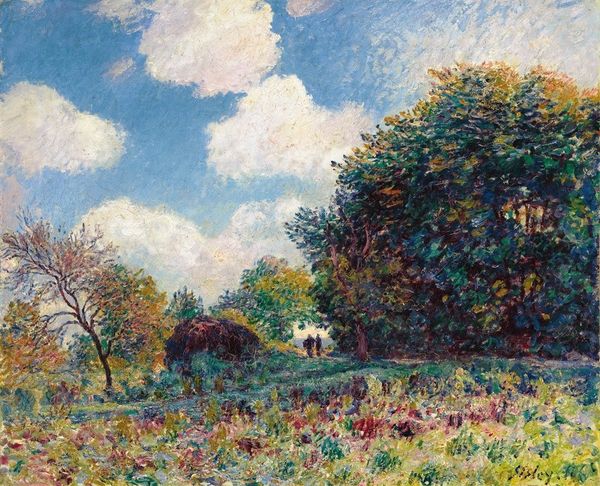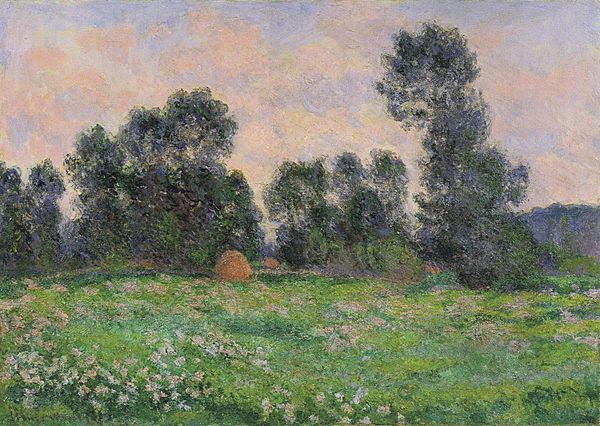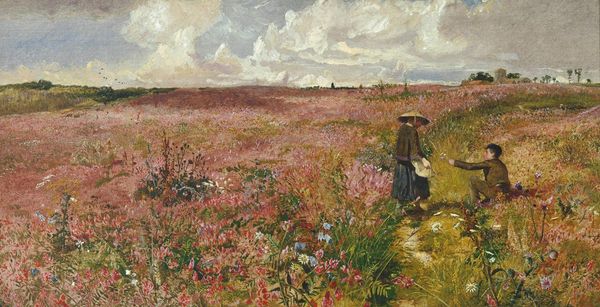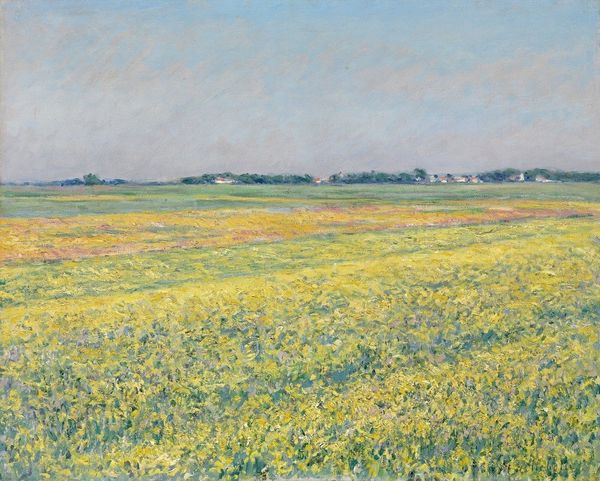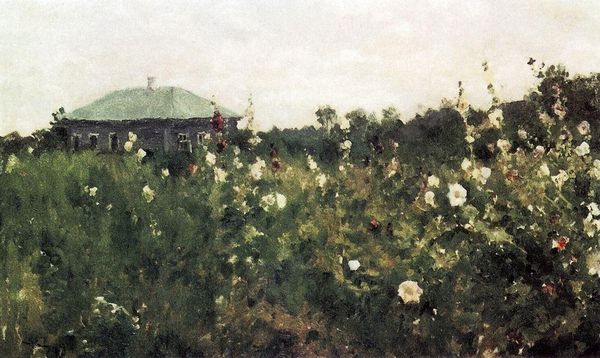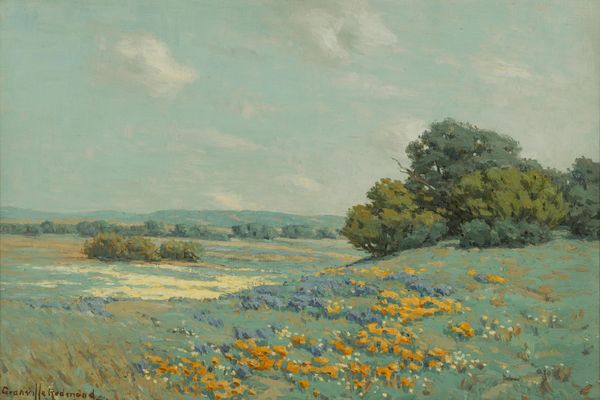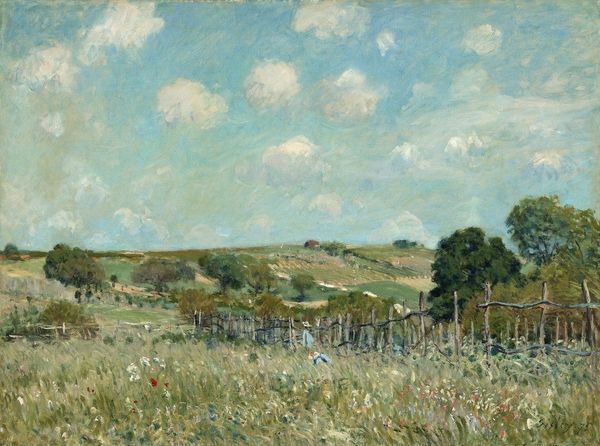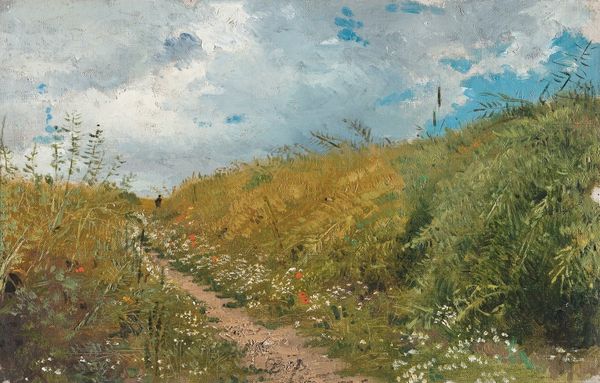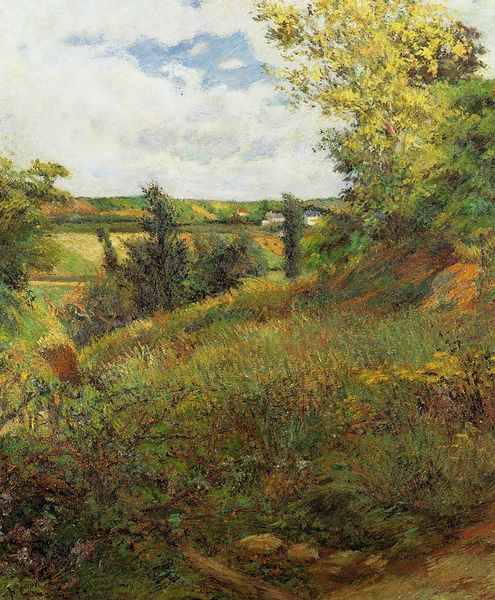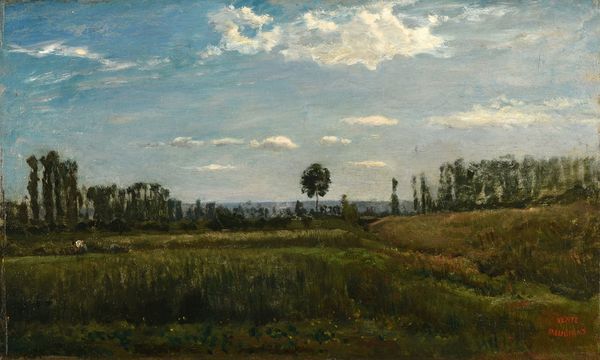
Copyright: Public domain
Curator: Ah, here we are at Arkady Rylov's "Blooming Meadow" from 1923. It’s a fascinating example of his landscape work in oil paint. Editor: The instant impression is of gentle warmth, an uncomplicated and sunny rural vista. There’s an embracing sense of peace. Curator: I agree. Rylov imbues it with this sense through colour and composition. Look at the vastness of the meadow under a boundless sky. There are common archetypes in visual art traditions involving earth, growth, and sky. Editor: Precisely, the blooms themselves seem almost allegorical – those swathes of yellows and purples read to me as stand-ins for abundance and a life lived in harmony with nature, idealized by post-revolution society searching for stability. Curator: I appreciate how you make the link with the cultural environment of its making. After periods of upheaval, a nostalgic longing for the pastoral does frequently emerge in artistic representation. Yet in looking closer I question Rylov’s intention. This image offers simplicity on the surface, yet under the natural beauty lurks potential state propaganda. Editor: Intriguing. Is the meadow a symbol co-opted, even unknowingly, to represent an idealized Soviet state, fertile and prosperous? It's crucial to remember that the public display of art served state interests in the early Soviet Union. Landscapes helped shape national identity. Curator: The sky could be considered representative too – look at those expansive blues and radiant clouds – visual shorthand perhaps for limitless potential under a bright future, a core communist message? Editor: And of course, Rylov himself became Chairman of the Leningrad Union of Artists a decade later. Perhaps this landscape foreshadows his alignment. Still, regardless of its context, it resonates, doesn't it? The charm of nature always has a home within the psyche. Curator: Agreed, despite our interpretation. A return to nature as refuge has long endured in times of change. I see its archetypes still endure in our cultural subconscious, despite this paintings sociopolitical reading. Editor: Ultimately it makes me consider art’s purpose within any societal environment: comfort or coercion, a tricky balance.
Comments
No comments
Be the first to comment and join the conversation on the ultimate creative platform.
